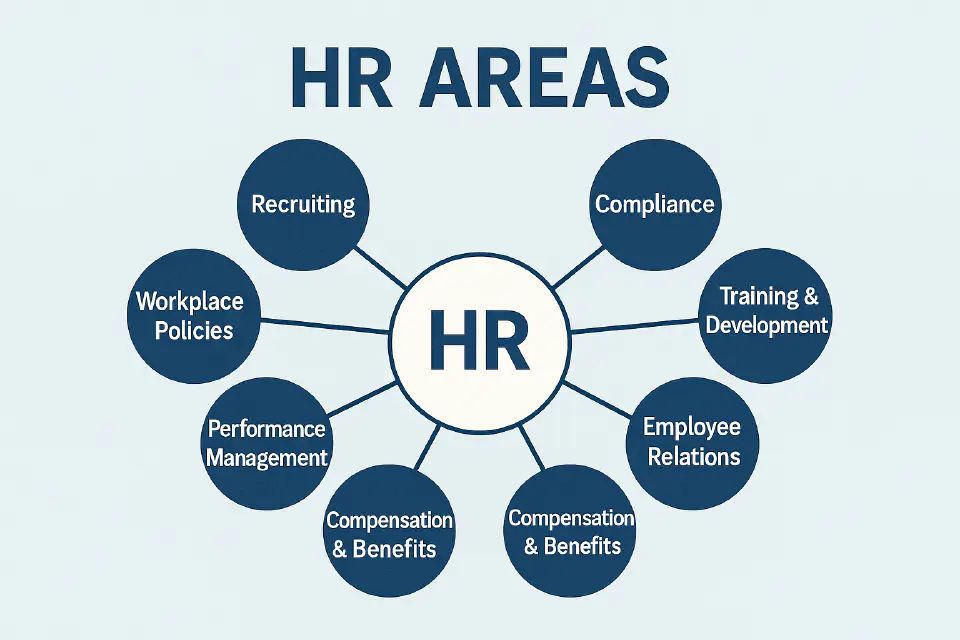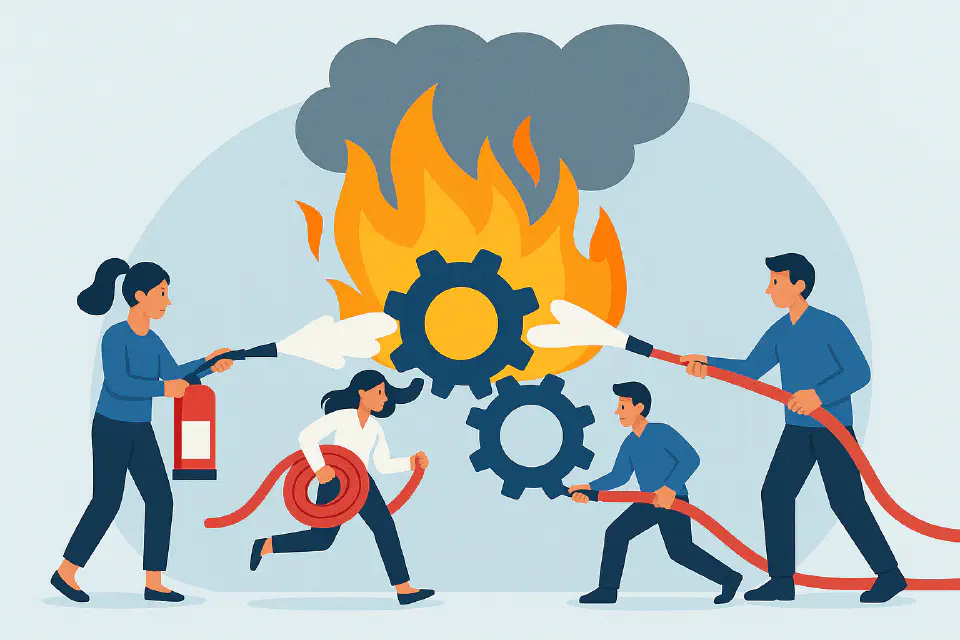
What is HR?
HR is more than hiring and firing. It’s the strategic backbone that supports people, culture, and growth. This page gives you a clear, practical introduction to what HR really means — even if you’re not an HR professional.
What Does “HR” Actually Mean?
“HR” stands for Human Resources — a term used to describe both the people working in an organization and the systems designed to manage them. At its core, HR is about managing the full employee experience: from recruitment to retirement.
Originally used to highlight people as a key asset (just like capital or technology), the concept of HR evolved to cover a wide range of activities — from payroll to performance reviews, from onboarding to organizational change.
Whether you’re building a startup or working in a corporate setting, you’re doing HR whenever you:
- hire someone,
- define a job role,
- write a contract,
- resolve a conflict,
- set up employee benefits,
- or check in on someone’s mental health.
HR is not just a department. It’s a set of responsibilities that affect every person in the company, and it add a significant value added to the organization.
Core Functions of HR
Human Resources is an umbrella term that covers multiple interconnected activities. While exact roles differ depending on the company’s size or industry, most HR functions fall into these categories:
Recruitment & Hiring
Attracting and selecting the right people for the right roles. Includes employer branding, sourcing, interviewing, and making job offers. Recruitment isn’t just about filling vacancies — it’s about long-term team fit, diversity, and future growth.
Onboarding & Offboarding
Designing smooth entry and exit experiences. Effective onboarding boosts retention and performance, while offboarding ensures knowledge transfer and positive closure. It’s also critical for employer brand and legal risk management.
Learning & Development
Providing training, mentoring, and career development opportunities. Companies that invest in learning retain talent longer and foster innovation. This includes formal training, coaching, on-the-job learning, and continuous upskilling.
Performance Management
Setting clear goals, giving feedback, and managing performance. A good performance process is ongoing, not just an annual formality. It links company goals with individual accountability, and helps develop future leaders.
Compensation & Benefits
Managing salaries, bonuses, equity, health insurance, and other rewards. Good compensation policies support motivation, retention, and equity. Strategic HR uses compensation to align behavior with company priorities.
Employee Relations
Handling conflict, discipline, investigations, and overall workplace climate. HR helps maintain a respectful and legally compliant environment. It also fosters psychological safety and healthy communication.
HR Operations
Keeping HR data, systems, and documentation in order. Includes contracts, HRIS (Human Resource Information Systems), compliance tracking, and audit readiness. Strong operations are invisible but critical.

Why HR Matters (Even in Small Companies)
Some founders think HR is just bureaucracy. Others delay hiring HR until they hit 50+ employees. Both approaches are risky.
Even without a formal HR department, someone is doing HR — it might be a founder, an office manager, or even a team lead.
Here’s why early HR matters:
- It reduces legal and compliance risk (e.g. contracts, privacy, working hours)
- It supports fair and transparent people practices
- It helps scale the culture and communication
- It saves time in the long run
You don’t need complex policies from day one, but you do need clarity. Even basic onboarding, role definitions, and payroll systems make a huge difference.

A common mistake is to “figure it out later” — but reactive HR leads to inconsistent hiring, unclear roles, disengaged employees, and higher turnover. Starting with a few strong practices early on (even just an onboarding checklist or salary framework) can create a foundation that scales with the business.
How HR is Changing
Today’s HR is not just administrative. It’s a strategic function — with a seat at the leadership table.
Key shifts in modern HR:
- From paperwork to people analytics: Using data to drive decisions about hiring, turnover, and engagement.
- From static policies to adaptive culture: Supporting hybrid work, wellbeing, and diverse teams.
- From gatekeeping to enabling: HR as a service function that empowers both employees and managers.
- From tools to ecosystems: Integrating platforms like HRIS, ATS, L&D systems, and survey tools.
HR today plays a role in digital transformation, innovation, organizational design, and business strategy. In some companies, HR leads DEI (diversity, equity, inclusion) initiatives, manages remote-first structures, and drives change at the executive level.
How to Start with HR (Even Without an HR Team)
You don’t need a full department or fancy software to begin with HR. What matters most is being intentional — setting up simple, people-centered practices that grow with your business. Start small. Focus on clarity and consistency:
- Write clear job descriptions and responsibilities
- Use a basic checklist for onboarding new hires
- Keep contracts and personal data secure and organized
- Set up regular check-ins and feedback loops
- Define your working hours, leave policy, and communication expectations
Even a shared folder with key documents and a spreadsheet to track employees can be a good first step. What matters is not the tool — but the intent behind it.
Related Topics
If you’re ready to go deeper, explore these next:
- HR Roles & Responsibilities
- Employee Lifecycle Overview
- HR Competencies & Career Paths
- Compliance & Ethics
- Introduction to HR Systems